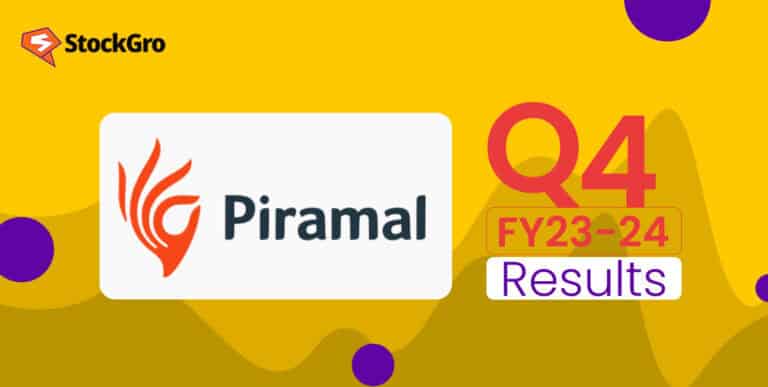Table of contents
Introduction
Market capitalization and market value may sound similar but are both quite different. Market capitalization is the total value of a company’s shares. It’s like the price tag of the company if you want to buy all its shares. Market value, on the other hand, changes based on what people are willing to pay for those shares. It’s like the mood of the market—always moving.
Understanding capital value vs market value is important because it helps investors make smart choices. Capital value gives a snapshot of a company’s size and stability. Whereas market value shows what investors think that company is worth right now. So, when you are looking at stocks, keep both these in mind.
How to evaluate your investments based on market capitalization and market value?
You need to look at market capitalization vs market value to understand how good your investments are. The market capitalization shows how much a company’s worth is based on its stock.
You can easily get this by multiplying the stock price by the number of shares. Whereas market value is a bit different. It’s what people are willing to pay for the company, which can change fast.
Market cap helps you judge the size of a company. Big numbers mean big companies. But it doesn’t tell you if it’s a good buy. Market value, on the other hand, is a much more versatile factor that depends on the company’s current situation, news surrounding it, its future plans and more.
It can be understood as a measure of how much valuation a company is actually worth and depends on factors such as price-to-earnings, price-to-sales, and return-on-equity used to analyze it.
How market capitalization and market value determine stock analysis
Let’s take TCS (Tata Consultancy Services), one of India’s largest IT companies. If TCS has 2 billion shares and each sells for ₹3000, its market cap is huge—₹6000 billion. This size shows TCS is a giant in its field.
Market value, as we said, changes rapidly. It’s what people are willing to pay for the stock. For instance, Tata Group companies might see their stock jump if they announce a new project. This rise in price boosts its market value, showing investor excitement.
But why do we care? Well, the market cap gives you the company’s size. Big companies like TCS are often seen as stable. Market value, on the other hand, shows what’s hot. Sudden controversies related to the chairman or the CEO of the company or any political disturbances can lower the market value for a brief time as would a dip in profits.
Thus, if you want to be a smart investor, always keep an eye on what’s hot in the market. Keep track of the market value as well as of market cap.
You can also look for the book value of the company. It can give you a better understanding of the investment.
why is it important to understand book value?
Book value is like a company’s savings account balance. It’s what remains if the company sold everything and paid off its debts. If you already didn’t know, then let me tell you that book value and market capitalization are entirely two different things.
Understanding book value vs market capitalization can help you make smart investment decisions. Think of book value as what a company is worth on paper, while market capitalization is what people are willing to pay for it on the stock market.
Let’s use TCS (Tata Consultancy Services) as an example again. If TCS owns buildings, computers, and other stuff worth ₹1000 crore and owes ₹200 crore in debts, its book value is ₹800 crore (₹1000 crore – ₹200 crore). This is TCS’s book value.
But TCS’s market cap is a different story. It depends on TCS’s stock price multiplied by the total number of its shares. If TCS has 1 crore shares priced at ₹2000 each, its market cap would be ₹2000 crore. This number shows what investors think TCS is worth based on its future growth and profits.
So, when you hear book value vs market capitalization, remember: book value is about today’s worth on paper, and market cap is about future worth in the stock market’s eyes.
Understanding market capitalization vs enterprise value for smart investment
When you compare market capitalization vs enterprise value, you are looking at two ways to measure a company’s worth. Market cap is like counting all the money a company could get if it sold every share today.
Enterprise value adds any money the company owes (debt) and subtracts any cash it has. This gives you a fuller picture of what it would cost to buy the whole company, not just the shares.
Let’s understand this with an example:
Assume TechGiant, a leading tech firm, has the following financials:
Market Cap: ₹1,000 crore
Debt: ₹300 crore
Cash: ₹100 crore
EBITDA(Earnings before interest, tax, depreciation, and amortization): ₹200 crore
Market Capitalization: Directly given as ₹1,000 crore.
Enterprise Value (EV)= Market Cap + Debt – Cash.
So, for TechGiant, EV = ₹1,000 + ₹300 – ₹100 = ₹1,200 crore.
This figure represents the total value of TechGiant, considering its debt and cash reserves, giving a more detailed view than the market cap alone.
Now, let’s consider HealthCorp, a company in the healthcare sector, with:
Market Cap: ₹500 crore
Debt: ₹200 crore
Cash: ₹50 crore
EBITDA: ₹120 crore
Market Capitalization: Directly given as ₹500 crore.
Enterprise Value (EV)= Market Cap + Debt – Cash
So, for HealthCorp, EV= ₹500 + ₹200 – ₹50 = ₹650 crore.
This reflects HealthCorp’s overall valuation, factoring in its financial structure.
EBITDA Comparison
EBITDA provides insight into a company’s operational profitability without the distortion of debt and non-cash expenses like depreciation. It’s a handy metric for comparing companies across industries or within the same sector.
TechGiant’s EBITDA: ₹200 crore suggests a robust operational performance, highlighting its ability to generate profits from its core business activities.
HealthCorp’s EBITDA: ₹120 crore, while lower than TechGiant, still indicates a solid operational standing, especially considering the scale and market cap differences between the two companies.
Wrapping up
Market cap is what you get when you multiply the number of shares a company has by the price of one share. Market value is trickier; it looks at different numbers, like how much profit a company makes compared to its share price, its sales, and how well it uses its money.
Don’t mix these up with book value. That’s what a company is really worth if you subtract things it owes from what it owns. Sometimes, a company’s book value can be more or less than what people think it’s worth on the stock market or its market cap.
For more ways to see financial growth and accumulate economic knowledge, visit StockGro today!
FAQs
Market capitalization, or market cap, shows the total dollar market value of a company’s outstanding shares of stock. As an investor, you can use this value to understand a company’s size.
Market value represents the price at which an asset could be bought or sold in the market, determined by the mutual agreement of buyers and sellers.
Market capitalization comes from market value. It represents the total value that investors assign to a company based on its stock price and the number of shares available for trading.
The basic market value of shares reflects the price individuals are prepared to offer for these securities to a seller on a stock exchange. A high market value frequently indicates strong demand for a stock, suggesting investor optimism regarding its prospects.
Market value is dependent on the following factors such as internal determinants like investment decisions, profitability, and expected growth. External determinants like stock returns, company size, and total assets. Other factors include capital costs, inflation, interest rates, government policies, and more.

